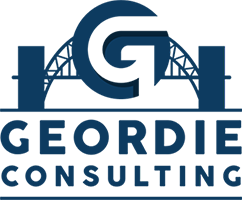When looking at your staff, your systems, and processes, how many boxes are you ticking and on who’s say so? Are things generally working to the companies’ benefit? Do you have a team of driven individuals who are happy and thriving within the internal organisation, all feeling heard, valued and integrated?
Is there a bias towards a gender, a leaning towards a social status and background?
Access to the higher echelons of the career ladder are notorious for being associated with it’s not what you know, it’s who you know. A board of interviewers may have a specific idea of the credentials of their ideal candidate and despite finding the perfect choice minus the face of best fit, they go for the less experienced who fits the look of the company.
Age, weight, background, academic credentials, experience, face, race, ethnicity are things that we all judge consciously or unconsciously. To suggest that you have not noted something is either to be in denial or it questions your levels of awareness. From the moment we open our eyes and ears, we are subject to bias and judgement, from the moment we open our mouths or act we are passing on the same, so how can it not filter through into the workplace?
The people of best fit ‘should’ get the job, but living by rules and regulations that suggest you should be getting a role because of any other credential including aesthetic, gender, status etc is questionable.

We all say, “the best candidate should get the job”, but what does that mean? All too often “best” becomes subjective and even when we attempt to make it objective, we forget the “human” factor that overlay bias on objectivity. Have you ever heard or thought “Oh they meant … rather than what they said in the interview”. To be able to stop the train, look around and see what is going on and who is on it can be a very worthwhile exercise, helping to cut cyclical and habitual actions, decision making and opening up the eyes to the types of bias that exist in everyday scenarios and whether or not they’re serving us as a collective or creating a greater divide.
According to Berthold et al, 2013, stopping to regard perspectives between in and out groups can have a positive impact on the perspective of the outgroups – those generally deemed not to fit in. The act of stopping to assess one’s perspective or a groups perspective of what has become the norm can be a valuable lesson in highlighting the loopholes left for certain individuals to become excluded, rather than being integrated into a team to form a more holistic workplace. Seeing differences in opinion could be seen as a threat, however managing perspective in a healthy way could also be seen as adding massive value and a learning trajectory to an existing set of beliefs or values. It gives a broader, more diverse view of problems and potential solutions, breeding more cohesive and mutually respectful relationships and better levels of communication. Identifying differing learning styles, strengths and weaknesses and having that understanding of how to be more supportive could be key points that take your company from good to great from a health and wellbeing perspective, right through to productivity and sales.
#geordielife #dataliteracy #datadrivendecisionmaking


